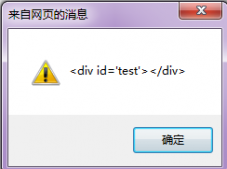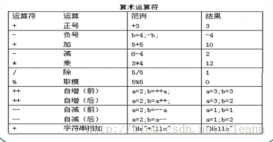背景描述
为了表达某一个属性,具备一组可选的范围,我们一般会采用两种方式。枚举类和数据字典,两者具有各自的优点。枚举类写在java代码中,方便编写相应的判断逻辑,代码可读性高,枚举类中的属性是可提前预估和确定的。数据字典,一般保存在数据库,不便于编写判断和分支逻辑,因为数据如果有所变动,那么对应的代码逻辑很有可能失效,强依赖数据库数据的正确性,数据字典中对应的属性对业务影响并不大,日常开发中常用做分类,打标签使用,属性的多少无法估计。
目前基本上没有一个很好的全局处理枚举类的方案,所以我就自己综合各方面资料写了一个。
代码
架构还在不断完善中,代码不一定可以跑起来,不过关于枚举的配置已经完成,大家可以阅读并参考借鉴:pretty-demo
前言
大多数公司处理枚举的时候,会自定义一个枚举转换工具类,或者在枚举类中编写一个静态方法实现integer转换枚举的方式。
比如:
|
1
2
3
4
5
6
7
8
9
10
11
12
13
14
15
16
17
18
19
20
21
22
23
24
25
26
27
28
29
|
// 静态方法方式public enum genderenum { // 代码略 public static genderenum get(int value) { for (genderenum item : genderenum.values()) { if (value == item.getvalue()) { return item; } } return null; }}// 工具类方式public class enumutil { public static <e extends enumerable> e of(@nonnull class<e> classtype, int value) { for (e enumconstant : classtype.getenumconstants()) { if (value == enumconstant.getvalue()) { return enumconstant; } } return null; }}genderenum gender = enumutil.of(genderenum.class,1); |
这种方式很麻烦,或者需要手动编写对应的静态方法,或者需要手动调用工具类进行转换。
解决方案
为了方便起见,我做了一个全局枚举值转换的方案,这个方案可以实现前端通过传递int到服务端,服务端自动转换成枚举类,进行相应的业务判断之后,再以数字的形式存到数据库;我们在查数据的时候,又能将数据库的数字转换成java枚举类,在处理完对应的业务逻辑之后,将枚举和枚举类对应的展示信息一起传递到前台,前台不需要维护这个枚举类和展示信息的对应关系,同时展示信息支持国际化处理,具体的方案如下:
1、基于约定大于配置的原则,制定统一的枚举类的编写规则。大概规则如下:
- 每个枚举类有两个字段: int value(存数据库),string key(通过key找对应的i18n文本信息)。这块需要细细讨论下,枚举值通常存数据库有存int值,也有存string值,各有利弊。存int的好处就是体积小,如果枚举的值是包含规律的,比如-1是删除,0是预处理,1是处理,2是处理完成,那么我们所有非删除数据,我们可以不使用 status in ( 0,1,2)这种方式,而转换为 status >= 0 ; 存string的话,好处就是可读性高,直接能从数据库的值中明白对应的状态,劣势就是占的体积大点。当然这些都是相对的,存int的时候,我们可以完善好注释,也具备好的可读性。如果int换成string,占的体积多的那一点,其实也可以忽略不计的。
- 枚举枚举类需要继承统一接口,提供相应的方法供通用处理枚举时候使用。
下面是枚举接口和一个枚举示例:
|
1
2
3
4
5
6
7
8
9
10
11
12
13
14
15
16
17
18
19
20
21
22
23
24
25
26
27
28
29
30
31
32
33
34
35
36
37
38
39
40
41
42
43
44
45
46
47
48
49
50
51
52
|
public interface enumerable<e extends enumerable> { /** * 获取在i18n文件中对应的 key * @return key */ @nonnull string getkey(); /** * 获取最终保存到数据库的值 * @return 值 */ @nonnull int getvalue(); /** * 获取 key 对应的文本信息 * @return 文本信息 */ @nonnull default string gettext() { return i18nmessageutil.getmessage(this.getkey(), null); }}public enum genderenum implements enumerable { /** 男 */ male(1, "male"), /** 女 */ female(2, "female"); private int value; private string key; genderenum(int value, string key) { this.value = value; this.key = key; } @override public string getkey() { return this.key; } @override public int getvalue() { return this.value; }} |
我们要做的就是,每个我们编写的枚举类,都需要按这样的方式进行编写,按照规范定义的枚举类方便下面统一编写。
2、我们分析下controller层面的数据进和出,从而处理好枚举类和int值的转换,在spring mvc中,框架帮我们做了数据类型的转换,所以我们以 spring mvc作为切入点。前台发送到服务端的请求,一般有参数在url中和body中两种方式为主,分别以get请求和post请求配合@requestbody为代表。
【入参】get方法为代表,请求的mediatype为"application/x-www-form-urlencoded",此时将 int 转换成枚举,我们注册一个新的converter,如果spring mvc判断到一个值要转换成我们定义的枚举类对象时,调用我们设定的这个转换器
|
1
2
3
4
5
6
7
8
9
10
11
12
13
14
15
16
17
18
19
20
21
22
23
24
25
26
27
28
29
30
31
32
33
34
35
36
37
38
39
|
@configurationpublic class mvcconfiguration implements webmvcconfigurer, webbindinginitializer { /** * [get]请求中,将int值转换成枚举类 * @param registry */ @override public void addformatters(formatterregistry registry) { registry.addconverterfactory(new enumconverterfactory()); }}public class enumconverterfactory implements converterfactory<string, enumerable> { private final map<class, converter> convertercache = new weakhashmap<>(); @override @suppresswarnings({"rawtypes", "unchecked"}) public <t extends enumerable> converter<string, t> getconverter(@nonnull class<t> targettype) { return convertercache.computeifabsent(targettype, k -> convertercache.put(k, new enumconverter(k)) ); } protected class enumconverter<t extends enumerable> implements converter<integer, t> { private final class<t> enumtype; public enumconverter(@nonnull class<t> enumtype) { this.enumtype = enumtype; } @override public t convert(@nonnull integer value) { return enumutil.of(this.enumtype, value); } }} |
【入参】post为代表,将 int 转换成枚举。这块我们和前台达成一个约定( ajax中applicationtype),所有在body中的数据必须为json格式。同样后台@requestbody对应的参数的请求的mediatype为"application/json",spring mvc中对于json格式的数据,默认使用 jackson2httpmessageconverter。在jackson转换成实体时候,有@jsoncreator和@jsonvalue两个注解可以用,但是感觉还是有点麻烦。为了统一处理,我们需要修改jackson对枚举类的序列化和反序列的支持。配置如下:
|
1
2
3
4
5
6
7
8
9
10
11
12
13
14
15
16
17
18
19
20
21
22
23
24
25
26
27
28
29
30
31
32
33
34
35
36
37
38
39
40
41
42
43
44
45
46
47
|
@configuration@slf4jpublic class jacksonconfiguration { /** * jackson的转换器 * @return */ @bean @primary @suppresswarnings({"rawtypes", "unchecked"}) public mappingjackson2httpmessageconverter mappingjacksonhttpmessageconverter() { final mappingjackson2httpmessageconverter converter = new mappingjackson2httpmessageconverter(); objectmapper objectmapper = converter.getobjectmapper(); // include.non_empty 属性为 空("") 或者为 null 都不序列化,则返回的json是没有这个字段的。这样对移动端会更省流量 objectmapper.setserializationinclusion(jsoninclude.include.non_empty); // 反序列化时候,遇到多余的字段不失败,忽略 objectmapper.configure(deserializationfeature.fail_on_unknown_properties, false); // 允许出现特殊字符和转义符 objectmapper.configure(jsonparser.feature.allow_unquoted_control_chars, true); // 允许出现单引号 objectmapper.configure(jsonparser.feature.allow_single_quotes, true); simplemodule customermodule = new simplemodule(); customermodule.adddeserializer(string.class, new stringtrimdeserializer(string.class)); customermodule.adddeserializer(enumerable.class, new enumdeserializer(enumerable.class)); customermodule.addserializer(enumerable.class, new enumserializer(enumerable.class)); objectmapper.registermodule(customermodule); converter.setsupportedmediatypes(immutablelist.of(mediatype.text_html, mediatype.application_json)); return converter; }}public class enumdeserializer<e extends enumerable> extends stddeserializer<e> { private class<e> enumtype; public enumdeserializer(@nonnull class<e> enumtype) { super(enumtype); this.enumtype = enumtype; } @override public e deserialize(jsonparser jsonparser, deserializationcontext deserializationcontext) throws ioexception { return enumutil.of(this.enumtype, jsonparser.getintvalue()); }} |
【出参】当我们查询出结果,要展示给前台的时候,我们会对结果集增加@responsebody注解,这时候会调用jackson的序列化方法,所以我们增加了枚举类的序列配置。如果我们只简单的将枚举转换成 int 给前台,那么前台需要维护这个枚举类的 int 和对应展示信息的关系。所以这块我们将值和展示信息一同返给前台,减轻前台的工作压力。
|
1
2
3
4
5
6
7
8
9
10
11
12
13
14
15
16
17
|
// 注册枚举类序列化处理类customermodule.addserializer(enumerable.class, new enumserializer(enumerable.class));public class enumserializer extends stdserializer<enumerable> { public enumserializer(@nonnull class<enumerable> type) { super(type); } @override public void serialize(enumerable enumerable, jsongenerator jsongenerator, serializerprovider serializerprovider) throws ioexception { jsongenerator.writestartobject(); jsongenerator.writenumberfield("value", enumerable.getvalue()); jsongenerator.writestringfield("text", enumerable.gettext()); jsongenerator.writeendobject(); }} |
这样关于入参和出参的配置都完成了,我们可以保证,所有前台传递到后台的 int 都会自动转换成枚举类。如果返回的数据有枚举类,枚举类也会包含值和展示文本,方便简单。
3、存储层关于枚举类的转换。这里选的 ORM 框架为 Mybatis ,但是你如果翻看官网,官网的资料只提供了两个方案,就是通过枚举隐藏字段name和ordinal的转换,没有一个通用枚举的解决方案。但是通过翻看 github 中的 issue 和 release 记录,发现在 3.4.5版本中就提供了对应的自定义枚举处理配置,这块不需要我们做过多的配置,我们直接增加 mybatis-spring-boot-starter 的依赖,直接配置对应的Yaml 文件就实现了功能。
|
1
2
3
4
5
|
application.yml--mybatis: configuration: default-enum-type-handler: github.shiyajian.pretty.config.enums.enumtypehandler |
|
1
2
3
4
5
6
7
8
9
10
11
12
13
14
15
16
17
18
19
20
21
22
23
24
25
26
27
28
29
30
31
32
33
34
35
|
public class enumtypehandler<e extends enumerable> extends basetypehandler<e> { private class<e> enumtype; public enumtypehandler() { /* instance */ } public enumtypehandler(@nonnull class<e> enumtype) { this.enumtype = enumtype; } @override public void setnonnullparameter(preparedstatement preparedstatement, int i, e e, jdbctype jdbctype) throws sqlexception { preparedstatement.setint(i, e.getvalue()); } @override public e getnullableresult(resultset rs, string columnname) throws sqlexception { int value = rs.getint(columnname); return rs.wasnull() ? null : enumutil.of(this.enumtype, value); } @override public e getnullableresult(resultset rs, int columnindex) throws sqlexception { int value = rs.getint(columnindex); return rs.wasnull() ? null : enumutil.of(this.enumtype, value); } @override public e getnullableresult(callablestatement cs, int columnindex) throws sqlexception { int value = cs.getint(columnindex); return cs.wasnull() ? null : enumutil.of(this.enumtype, value); }} |
这样我们就完成了从前台页面到业务代码到数据库的存储,从数据库查询到业务代码再到页面的枚举类转换。整个项目中完全不需要再手动去处理枚举类了。我们的开发流程简单了很多。
结语
一个好的方案并不需要多么高大上的技术,比如各种反射,各种设计模式,只要设计合理,就是简单易用,类似中国古代的榫卯。
总结
以上就是这篇文章的全部内容了,希望本文的内容对大家的学习或者工作具有一定的参考学习价值,如果有疑问大家可以留言交流,谢谢大家对服务器之家的支持。
原文链接:https://www.cnblogs.com/shiyajian/p/10363554.html













